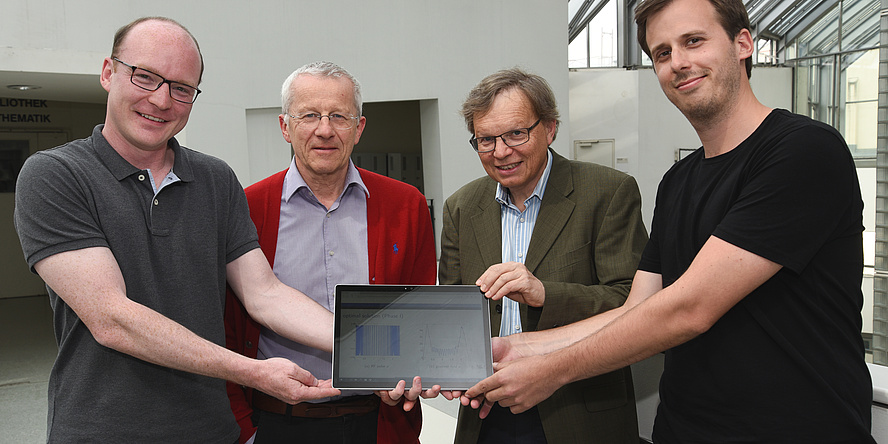Today’s medicine without
MRI is unthinkable. To improve this diagnostic method and make it more pleasant for patients thus also saving valuable time and resources, specialists around the world are working on the development of new MRI methods. The International Society for
MR in Medicine – short form: ISMRM – stages a competition each year for particularly interesting hot topics in
MRI development. Teams of researchers from international universities, such as Stanford, Harvard and USC to name just a few, compete against each other in the ISMRM Challenge. This year, mathematicians from the University of Graz and medical engineers from
TU Graz won first prize together as team “rfcontrol”.
Challenge in two categories
The aim of the competition was to improve excitation of
MR signals in two categories. In the first one, the idea was to significantly accelerate investigations by simultaneous activation and measurement of multiple examination layers – in the jargon called “simultaneous multiple slice imaging (SMS)”. In the second one, using the “parallel transmit (pTX)” method, the task was to solve problems in ultra-high field systems – in other words, in systems with magnetic field strengths above 4 Tesla, something still standing in the way of a broad clinical use of these highly sensitive devices.
Mathematically optimized MRI pulses
The Graz researchers took part in the
SMS category. Armin Rund from Uni Graz und Christoph Aigner from
TU Graz developed mathematical methods and algorithms for this which finally ended up as software. They were able to optimally design the required MRI pulses using this software, thus conclusively winning the competition. And there was more success to come. The winning team in the
pTX category from Stanford University built on a method by Graz researchers that was only published in February.
Teamwork as a recipe for success
The teams led by Karl Kunisch, Uni Graz, and Rudolf Stollberger, TU Graz, have been working together for years in the Special Research Area (SFB) Mathematical Optimization with Application in Biomedical Sciences and also in the framework of the research cooperation project BioTechMed-Graz. And not without success. In the past they were able to achieve second and third place in the worldwide
ISMRM Challenge. “What is so distinctive about this research area is that it combines applied mathematics with real biomedical engineering,” stresses Karl Kunisch, head of the mathematics institute and
SFB spokesman. “First place at this competition is the best evidence for this great cooperation which has grown over the years.” The method has awoken the interest of a number of international institutes. “This leads to new partnerships at research level,” highlights Stollberger.

